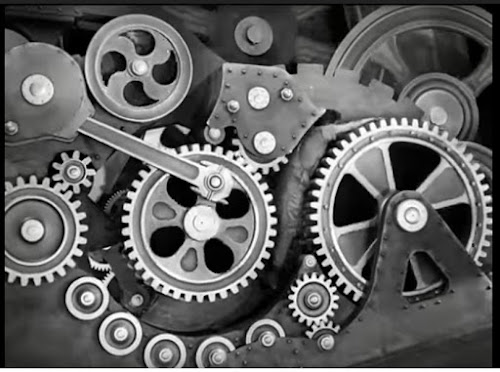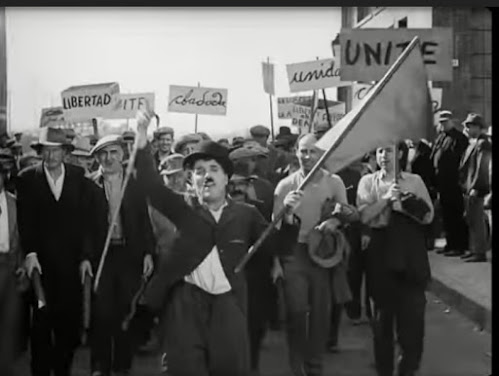Wednesday, 30 September 2020
Thinking Activity - Otherness in The Scarlet Letter
Wednesday, 23 September 2020
The Waste Land by T. S. Eliot - Thinking Activity
Hello Readers!
"The Waste Land" one of the greatest work of modern age is written by T. S. Eliot. This poem primarily focuses upon the absence or degradation of human values found in modern life. 1922 was the year in which the poem was published. It was the time when Western world was contented with much more materialistic lifestyle. The poem is dedicated to Ezra Pound. The poem's incidents are referred by the use of Indian and Greek mythology which symbolically retells the modern temperaments and culture. It also consists intertextuality and multifaceted view of the world. The way back, Eliot had described the absurdity of life and moral depreciation. But it is still relatable in many respects. Let us see, by answering some questions, how The Waste Land fits in terms of relevance of psychology and philosophy.
Two major themes :
Here are some questions to ponder upon and
1. What are your views on the following image after reading 'The Waste Land'? Do you think that Eliot is regressive as compared to Nietzsche's views? or Has Eliot achieved universality of thought by recalling mytho-historical answer to the contemporary malaise?
Ans:
Friedrich Nietzsche didn't believe in the existence of God. He has famously written in his work Thus Spoke Zarathustra that God Is Dead. Moreover to that, he gave the idea of Ubermensch which is superman. The denial of God's existence and establishment of human as supreme above all is a progressive thought. In terms of Eliot's poem, one can see that poet is going backwards to find the solution of today's time. Eliot turns towards mythology, Buddhism, Christianity and Hindu wisdom and philosophy. It is true that Eliot is regressive as compared to Nietzsche's views, but he also succeeds in achieving the timelessness and universality of the poem. After reading all the references of the poem, one can say that Eliot has tried to bring out spirituality from myths and religions. But he doesn't move forward to develop that spiritual abilities in precedence of human life. One always finds an anchor to live life, be it a religion or spirituality. Nietzsche was trying to prove that human evolution is constantly developing and humans are going towards becoming divine power and master of all moralities.
2. Prior to the speech, Gustaf Hellström of the Swedish Academy made these remarks:
What are your views regarding these comments? Is it true that giving free vent to the repressed 'primitive instinct' lead us to happy and satisfied life? or do you agree with Eliot's view that 'salvation of man lies in the preservation of the cultural tradition'?
Ans : As it is known that Sigmund Freud was knows as the founder of psychoanalysis, a study of human behavior, psyche and personality. He established many new observations on human behavior and its connection with basic instincts. Freud emphasized on four basic instincts found in almost all animals including humans, which are Hunger, Sleep, Fear and Reproduction (sexual instincts). One can never be free from these four instincts. If one tries to control or repress those four instincts one may develop mental illness or disease. The cycle of life is based on this four instincts.
While doing the autobiographical reading of the poem, one finds the connection of T. S. Eliot's life and one can think that his life events were metaphorically depicted in The Waste Land. Eliot's thought is quite convincing that 'salvation of man lies in the preservation of the cultural tradition'. But one should also give way to the basic instincts to live happy and satisfied life.
3) Write about allusions to the Indian thoughts in 'The Waste Land'. (Where, How and Why are the Indian thoughts referred?)
Ans: There are three religious thoughts conveyed poetically in The Waste Land. Buddhism, Christianity and Hinduism. The reference of the fire sermon comes from Buddhism, fifth part of the poem 'What the Thunder Said' refers to Hindu scripture Brihadaranyak Upanishad. In this Upanishad, Chapter five, Second Brahmana (The entire Upanishad is lectured by several brahmins) it is written that Prajapati, the creator injuncted a message in form of thunder, a heavenly sound coming from sky, often referred as supernatural calling of divine. Thunder makes a sound 'Da' three times. This sound is interpreted in different ways by Deva, the celestial beings, Manava, the human beings and Danava, the demons. Here in reference of the poem the celestial's interpretation is taken by Eliot.
The reason why Indian thoughts are referred is, these three words Datta, Dayadhvam and Damyata describe the way of life and its the solution of almost all of human sorrow.
First Da - Datta means be a giver. Donate at least a little part from what you have.
Second Da - Dayadhvam means have compassion, sympathize to others.
Third Da - Damyata means have self control.
All these words lead us to live a spiritually balanced life. In the modern age, Western civilization was prosperous enough in terms of material matters. England and European countries were considered as center of the world. But people were lacking human values. As mentioned above that sexual perversion and spiritual degradation was major drawback of society. T S Eliot finds a solution of this drawbacks in Hindu philosophy and in Upanishadik thoughts.
Thank You!
References:
https://www.wisdomlib.org/hinduism/book/the-brihadaranyaka-upanishad/d/doc122189.html
https://www.swami-krishnananda.org/brdup/brhad_V-01.html#Second
https://blog.dilipbarad.com/2014/10/presentations-on-ts-eliots-waste-land.html
Wednesday, 9 September 2020
Modernist Poems - Identifying Modernist Metaphors
Hello Readers!
Have you ever observed a retro wall clock which has pendulum ? Yes, it keeps on swinging from left to right, right to left. Each oscillation occur with precision and sharpness. We have heard that history repeats itself. Events which are recorded in past is echoed somewhere sometimes in current time also. Modernist literature and the events which are recorded in it, is evidently repeating themselves. Poetry and verse find such voice in the modern age. Here we shall bring out the modernist metaphors from selected poems.

https://blog.dilipbarad.com/2016/06/modernist-poems-activity-identify_25.html
(1) The Embankment by T. E. Hulme
Once, in finesse of fiddles found I ecstasy,
In a flash of gold heels on the hard pavement.
Now see I
That warmth’s the very stuff of poesy.
Oh, God, make small
The old star-eaten blanket of the sky,
That I may fold it round me and in comfort lie.
Star-eaten blanket, gold heels, hard pavement are some of the modern metaphors. It can be said that machination and industries had impoverished the laymen. The voice is heard from some deprived and needy person who wishes to have blanket to wrap up it's body. Hard pavement can also be seen as footpath in which every class of people, rich, poor, working people walk and find their way to somewhere.
(2) Darkness by Joseph Campbell
Darkness.
I stop to watch a star shine in the boghole –
A star no longer, but a silver ribbon of light.
I look at it, and pass on.
Darkness and boghole can be seen as modern metaphor in this poem. The speaker might be watching a reflection of a star in the surface of a boghole.
(3) Image by Edward Storer
Forsaken lovers,
Burning to a chaste white moon,
Upon strange pyres of loneliness and drought.
Metaphors: pyre of loneliness, drought
(4) In a Station of the Metro by Ezra Pound
The apparition of these faces in the crowd;
Petals on a wet, black bough.
Faces in the crowd, petals, black bough can be the modern metaphors.
(5) The Pool by Hilda Doolittle
Are you alive?
I touch you.
You quiver like a sea-fish.
I cover you with my net.
What are you—banded one?
Sea-fish, net, banded are metaphors.
(6) Insouciance Richard Aldington
In and out of the dreary trenches,
Trudging cheerily under the stars,
I make for myself little poems
Delicate as a flock of doves.
They fly away like white-winged doves.
Metaphors: trenches, white winged doves
(7) Morning at the Window by T. S. Eliot
They are rattling breakfast plates in basement kitchens,
And along the trampled edges of the street
I am aware of the damp souls of housemaids
Sprouting despondently at area gates.
The brown waves of fog toss up to me
Twisted faces from the bottom of the street,
And tear from a passer-by with muddy skirts
An aimless smile that hovers in the air
And vanishes along the level of the roofs.
Metaphors : damp souls, faces, aimless smile,
(8) The Red Wheelbarrow by William Carlos Williams
so much depends
upon
a red wheel
barrow
glazed with rain
water
beside the white
chickens
Metaphors: wheel, chickens
(9) Anecdote of the Jar by Wallace Stevens
I placed a jar in Tennessee,
And round it was, upon a hill.
It made the slovenly wilderness
Surround that hill.
The wilderness rose up to it,
And sprawled around, no longer wild.
The jar was round upon the ground
And tall and of a port in air.
It took dominion everywhere.
The jar was gray and bare.
It did not give of bird or bush,
Like nothing else in Tennessee.
Metaphors: jar, wilderness
(10) l(a by E. E. Cummings
l(a
le
af
fa
ll
s)
one
l
iness
l(a leaf falls)oneliness. This is very short and one line poem. Still it tells two major metaphors such as loneliness and fall. Here loneliness can be seen as lack of empathy. In modern scenario it is seen that relations are full of plasticity. Human touch is now losing the ground and machines are found everywhere. Perhaps the metaphor of fall might be regarding the fall of humanity. Oneliness is indicating something about individuality. In a way, the tone of poem seems tragic.
Thank You!
Sunday, 6 September 2020
Study of Frames in Charles Chaplin's "Modern Times" and "The Great Dictator"
 |
Saturday, 5 September 2020
Virtual Teacher's Day Celebration 2020
Hello Readers!
Thank You for watching the teacher's day video.
Click Here to open the quiz link.
https://forms.gle/YsrpjCqeXuP8nVJw9
If you want to watch it again, here is the video.
Sample photo of auto-generated certificate

Data of Viewers from YouTube and Facebook, How many appeared in online test
|
Viewers |
How many appeared in the test |
|
|
Facebook |
YouTube |
|
|
279 |
87 |
20 |
In order to preserve this online teaching experience few Facebook posts are embedded here.
Post 1
Post 2
Thank You!

























